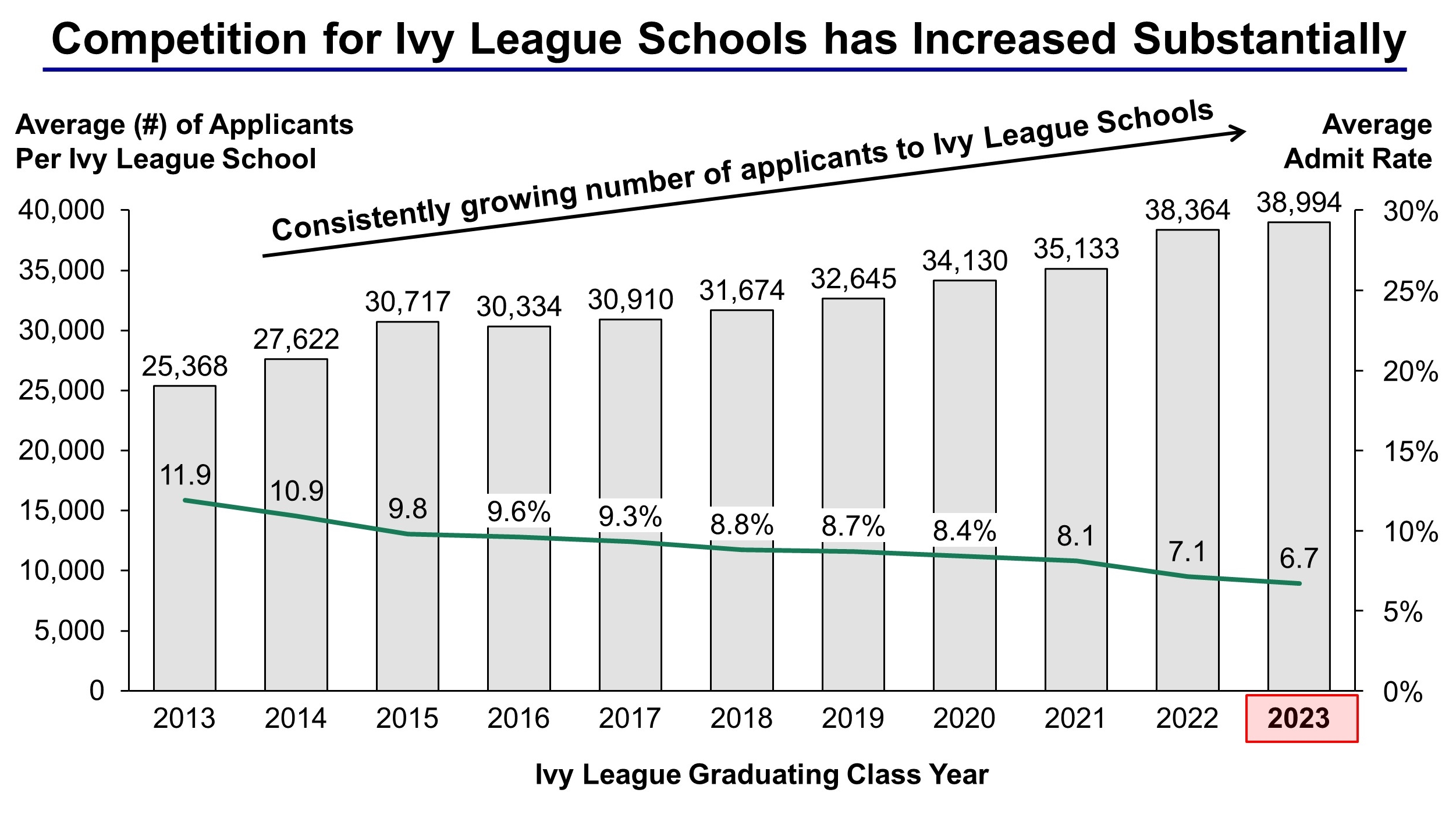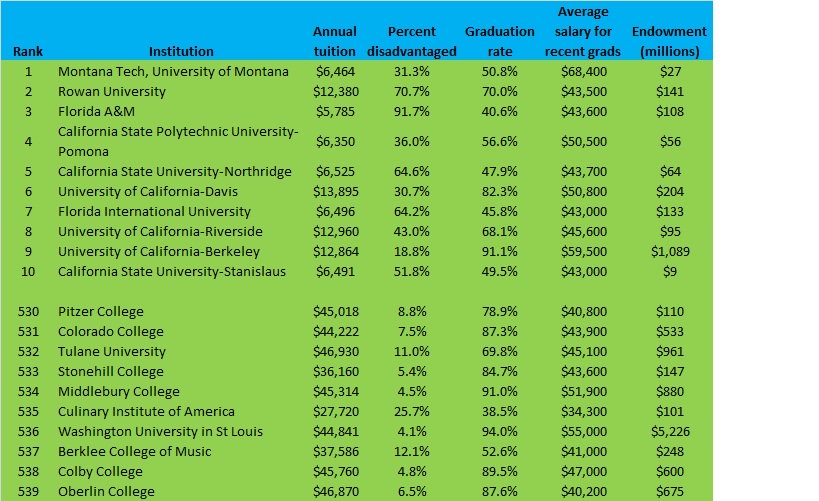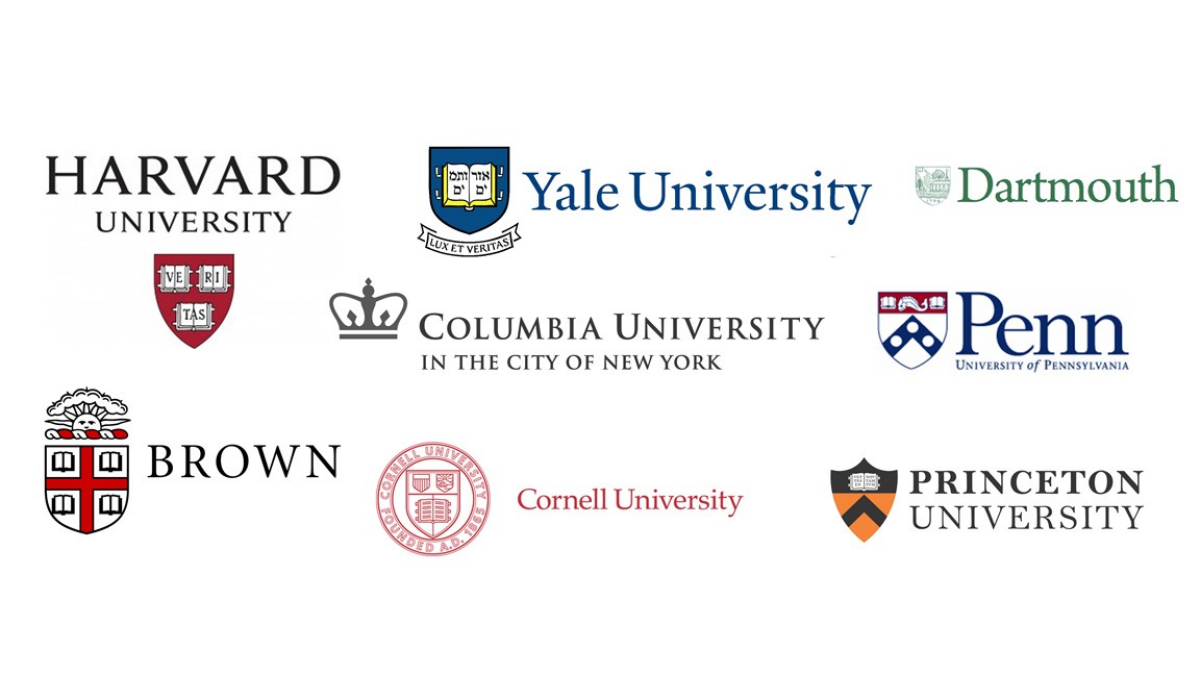The second most selective and arguably the most prestigious university in the country, Harvard University has been around for longer than the United States has been a country. Since its founding in 1636, the school has grown into a world center for research supported by a $40 billion endowment. The selectivity of Harvard admissions is topped only by Stanford University with its 4% acceptance rate. However, the university also offers highly rated programs in the humanities and social sciences, with popular majors including public health and international studies. Moreover, undergraduates praise the school's financial aid offering. News data, the mean aid package totals $47,492, and the college's alumni earn an average starting salary of $62,700.
Located in Upper Manhattan, Columbia can be an excellent choice for students looking for a top-ranked university in an urban environment. Columbia is one of the largest of the Ivies, and it has a close relationship with neighboringBarnard College, one of the nation's top women's colleges. Columbia admissions are among the most selective in the country, and straight "A"s and near perfect SAT scores are not always enough to get an acceptance letter. Many graduate programs are also highly selective, and the university is home to an excellent medical school, law school, business school, engineering school, and numerous other programs. Penn students develop the intellectual connections they need to thrive in an ever-changing and complex world. Working with faculty across a flexible curriculum spanning 4 undergraduate and 12 graduate schools, students develop adaptable, well-rounded minds.
The physical proximity of the university's resources make thinking and learning between departments and disciplines a part of everyday life at Penn. From innovative dual degree programs that defy traditional academic boundaries to rigorous grounding in the liberal arts and sciences, Penn is fueled by an open and endless exchange of ideas. The Ivy League is an athletic conference comprising eight private institutions of higher education in the Northeastern United States.
The conference name is also commonly used to refer to those eight schools as a group. The eight institutions are Brown University, Columbia University, Cornell University, Dartmouth College, Harvard University, Princeton University, the University of Pennsylvania, and Yale University. The term Ivy League also has connotations of academic excellence, selectivity in admissions, and social elitism. In addition, Ivy League schools are often viewed by the public as some of the most prestigious universities worldwide and are often ranked amongst the best universities in the United States and worldwide. All of the Ivy League's institutions place within the top 15 of the U.S.
News & World Report college and university rankings; with five placing in the top six. If you have the grades, test scores and other admissions requirements to get accepted into Ivy League schools to earn your math or science degree, you will want to apply to the best. News and World Report" is a leading expert in ranking schools and degree programs.
They take in a variety of factors that include quality of classes and teachers, graduation percentages, student satisfaction and tuition cost. By learning what the best Ivy League schools are for math and science, you can get a better perspective. Each Ivy League college has its own unique accomplishments that make it important. All carry a certain reputation with them, and each school has programs that excel primarily in the medical and law fields, making them some of the most sought-after schools in the world. Their admissions process is very selective, which helps the schools ensure that they only accept the best and brightest.
Many famous people have graduated from Ivy League schools, including recent presidents George W. Bush, Bill Clinton, and Barack Obama. This prestige leads many to believe that these colleges are only for the wealthy and elite. Often, companies look for Ivy League graduates as potential employees, usually preferred by law firms, medical facilities, and large corporations.
It has long been coveted to have earned a degree from an Ivy League school. Today, there are other competitors that some claim to be just as good as their Ivy counterparts. Some of these well-known schools include Duke University, Johns Hopkins, MIT, Vanderbilt, and Georgetown University, to name a few.
The Ivy League schools are still excellent in both academia and in sports, and they have left a legacy of higher education with an exceptional track record and reputation to go along with them. With a rich history dating to 1764, Brown University is the second smallest of the Ivies, and the school has more of an undergraduate focus than universities such as Harvard and Yale. The university's urban campus sits adjacent to the Rhode Island School of Design , one of the nation's top art schools, and students can easily cross-register between the two institutions. The Brown admissions process can be a bit daunting with the school's single-digit acceptance rate. Although it's important to always aim for the sky and dream big, setting realistic goals for yourself is just as important. Hundreds of colleges out there can deliver better education to admitted students than the Ivies.
Many of these schools, like "Public Ivy" universities are also more accessible and offer lower tuition fees, considering how the Ivies do not offer applicants any merit-based financial aid (only need-based aid). The college admissions process is often confusing and even a bit nerve-wracking especially when you're applying to a prestigious and highly selective university. For over a decade, we've been helping students just like you master the college application process and nail their applications. In fact, 75% of the students we work with get accepted into an Ivy League school or Top 10 university.
Although Cornell University has the highest acceptance rates of all Ivy League schools, this does not mean that it's an easy school to get into. To be a competitive applicant for any of these eight prestigious institutions, you cannot slack off when it comes to your applications. Start planning your acceptance strategies early, which means studying hard at school and planning ahead for your standardized tests. If you have not been involved in an extracurricular activity since childhood, plan to seriously commit to an activity as early as you can. Choose something you love to do as this will be evident in your application components. Most importantly, do not choose to go to an Ivy League school for appearances.
Choose a program you actually want to attend and graduate from, rather than a program that will look good on your CV. Prestige and social status do not necessarily translate into better educational fit for you. Choose happiness and invest in your education in a school you truly want to attend. Although lesser known as a liberal arts college, Williams is one of the best non-Ivy colleges in the nation, with majors ranging from economics to political science, government, and history.
Additionally, Williams offers courses in the style of the tutorial system employed by Oxford and Cambridge. Consisting of a professor and two or three students, these tutorials allow undergraduates to learn in an intimate, personalized atmosphere. During their free time, Williams students enjoy plenty of outdoor activities in Western Massachusetts, such as hiking, canoeing, and cross-country skiing. Another university in Illinois, Northwestern holds the No. 9 spot on the list of best national universities.
As a bonus, Northwestern students have plenty of opportunities to take courses overseas. Holding the No. 6 spot on US News & World Report's list of national universities, Stanford actually ranks ahead of several of the Ivies. So, it's no surprise that this institution is unofficially referred to as the Ivy of the West. Along with exceptional academic programs, the school offers small class sizes — almost 70 percent of classes have fewer than 20 students — and the opportunity to work closely with faculty. Students are encouraged to participate in professors' research efforts and seek out mentorship opportunities while earning their degrees. Leadership is at the core of the educational experience at this liberal arts college, which has produced VIPs like former AOL CEO Steve Case, legendary composer Stephen Sondheim, and Morning Joe co-host Mika Brzezinski.
Since 1997, leadership studies has even been offered as its own concentration, blending political science, anthropology, and history. What used to be a last resort for students who were underqualified for the Ivies is now just as competitive and at the top of many a college wish list. Its location in the heart of Music City is part of the appeal, but so are the academics and campus life. Undergraduate research opportunities are plentiful, and they're integrated into every field of study, and the university is currently pending more than $600 million to convert its dorms into LEED-certified residential colleges.
According to the Princeton Review, Vanderbilt also has the happiest students. As late as the 1960s many of the Ivy League universities' undergraduate programs remained open only to men, with Cornell the only one to have been coeducational from its founding and Columbia being the last to become coeducational. Before they became coeducational, many of the Ivy schools maintained extensive social ties with nearby Seven Sisters women's colleges, including weekend visits, dances and parties inviting Ivy and Seven Sisters students to mingle. This was the case not only at Barnard College and Radcliffe College, which are adjacent to Columbia and Harvard, but at more distant institutions as well. The movie Animal House includes a satiric version of the formerly common visits by Dartmouth men to Massachusetts to meet Smith and Mount Holyoke women, a drive of more than two hours. These colleges are known for being selective in their admissions; since the year 2000, the acceptance rates at each of the universities is said to have varied from 6 to 16 percent.
In fact, in the most recent academic year, seven of the eight Ivy League schools reported record-high applications; seven also reported record-low acceptance rates. Howard and Matthew Greene co-authored the book in which 63 colleges were identified for their similarities to the Ivy League. Some of the overarching characteristics included a low acceptance rate, academic rigor, liberal arts education, and smaller size.
It was written to help students who don't get into the Ivies to find suitable schools that still meet their academic goals. It is easy to say "plan ahead", but there is a lot of advantage in knowing what school and program you would like to attend in the future. If you are certain about which school you want to enroll in, it might be wise to apply through the Early Action/Early Decision program.
This way, your deadline for application is earlier, but so is your response date. To utilize this opportunity, you must research your school of choice and determine whether you are a good fit for the program to which you're applying. Early Action programs give you an early answer as to where you stand in the admissions process. According to most recent data, Cornell's acceptance rates for their early decision program is 22.7%! Undergraduates at Columbia University start with a common foundation of curriculum that includes literature, philosophy, science, art, history and music, and caps classes.
What Colleges Are Ivy League Schools Each class is only 22 students, so students experience close interaction with faculty. STEM programs like engineering and computer science are popular at Columbia. Located near Manhattan, New York, much of Columbia's student body is passionate about political involvement, actively taking part in political engagements throughout the city. Considered "the quintessential great urban university," Columbia is also one of the most diverse Ivy League schools, boasting students from all 50 states and over 100 foreign countries.
Interest in this answer stems from the Ivy League being synonymous with America's most selective, prestigious, and elite colleges. In other words, not only are Ivy League acceptance rates among the country's lowest, each school carries a strong brand name that follows its alumni throughout their educations, careers, and networks. The institution was founded in 1746, making it the fourth oldest university in the United States.
It is a medium-sized institution with around 5,000 undergraduate enrollments, and like Harvard, has an extremely competitive acceptance rate of only 5%. Some of its most popular degrees include computer engineering, public policy analysis, and economics. It is rated #2 of the best colleges in America to study political science and public policy analysis. SAT grades range from 1440 to 1570 and ACT grades range between 32 and 35. The Ivy League is an American collegiate athletic conference comprising eight private research universities in the Northeastern United States.
The term Ivy League is typically used beyond the sports context to refer to the eight schools as a group of elite colleges with connotations of academic excellence, selectivity in admissions, and social elitism. Its members are Brown University, Columbia University, Cornell University, Dartmouth College, Harvard University, the University of Pennsylvania, Princeton University, and Yale University. Hence, with such extensive history and prestige, it is no surprise that Ivy League Schools entertain some of the stiffest competition between prospective students seeking admission. Furthermore, with acceptance rates for all eight schools in the single digits, these elite schools are some of the most selective as they typically only admit the top 1 percentile of applicants. In addition to undergraduate and graduate degree programs, Brown offers two certificates, an array of pre-college programs for high school students, and no-cost, no-credit online courses to learners across the globe. Harvard is best known for their highly ranked law school, but they also offer a variety of other academic units including medical school, design school, and business school.
Between its rich history, highly esteemed academic programs, and beautiful tree-lined campus, Harvard is an excellent choice to receive your higher education at. Your high school coursework is the biggest evidence of your academic abilities. The single most important document in your application is your high school transcript. Not only does it tell the admissions committee what kind of grades you received throughout the years, it also demonstrates your drive, dedication, and improvement over time. Impress the adcoms with a broad range of challenging courses, that you enjoy and find interesting. Try to take courses in different disciplines, including sciences, arts, humanities, and languages.
To increase your chances of success, take courses in disciplines you typically ace but do not forget to complete necessary requirements for graduation. You can find a study partner, ask your teacher for help, get a tutor, or design a study plan that would increase your understanding of the content. On the other hand, the Forbes, Niche, and Wall Street Journal/Times Higher Education rankings include both universities and liberal arts colleges. MIT ties with Columbia for the No. 3 spot on the list of national universities, ranking just behind Princeton and Harvard. Along with world-class research facilities featuring the latest technologies, MIT students enjoy access to the Independent Activities Program, a month-long January term featuring special courses and projects.
While the university's engineering school is its largest in terms of enrollment, MIT also earns high marks for non-tech programs such as political science and economics. Davidson has all the hallmarks of a liberal arts college , along with offerings you find at larger schools, like Division 1 sports. Basketball is a big part of the culture here—NBA superstar Steph Curry played for the Wildcats before he was drafted by the Golden State Warriors after his junior year.
In both academics and campus life, students are bound by a strict honor code. Exams are self-scheduled and unproctored, or take-home; doors to college buildings remain unlocked; and announcements are posted around the school to help people find lost belongings. News has ranked Babson the number one undergraduate school for entrepreneurship. All first-year students take "Foundations of Management and Entrepreneurship," in which they are given startup money to create, launch, and manage their own companies.
In business administration is the only degree granted, but students can choose from 27 concentrations on which to focus their study. Plus, traditional liberal arts courses are incorporated into the curriculum, for a well-rounded education. Because Swarthmore is part of the Quaker Consortium, students can cross-register at Penn, Bryn Mawr, and Haverford. So even though undergraduate enrollment is around 1,600, there are more than 600 courses to choose from, including an engineering program that grants a B.S.
Another unusual aspect is the honors program, which lets students design their own courses of study, work in very small seminars, and fulfill requirements by taking exams conducted by outside experts. All eight are in the top 20 for number of sports offered for both men and women among Division I schools. Unlike most Division I athletic conferences, the Ivy League prohibits the granting of athletic scholarships; all scholarships awarded are need-based .
In addition, the Ivies have a rigid policy against redshirting, even for medical reasons; an athlete loses a year of eligibility for every year enrolled at an Ivy institution. Additionally, the Ivies prohibit graduate students from participating in intercollegiate athletics, even if they have remaining athletic eligibility. The only exception to the ban on graduate students is that seniors graduating in 2021 are being allowed to play at their current institutions as graduate students in 2021–22. This was a one-time-only response to the Ivies shutting down most intercollegiate athletics in 2020–21 due to COVID-19.


























